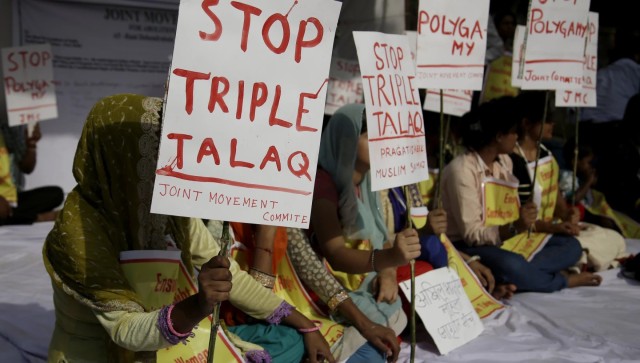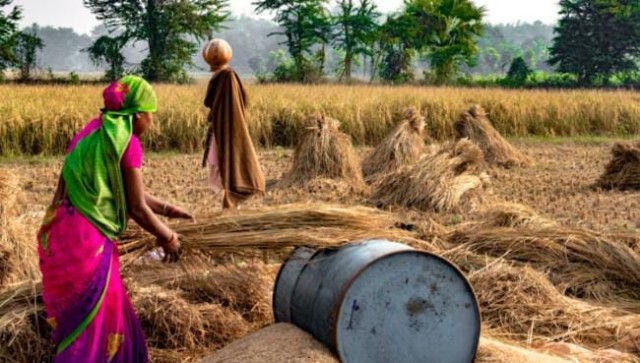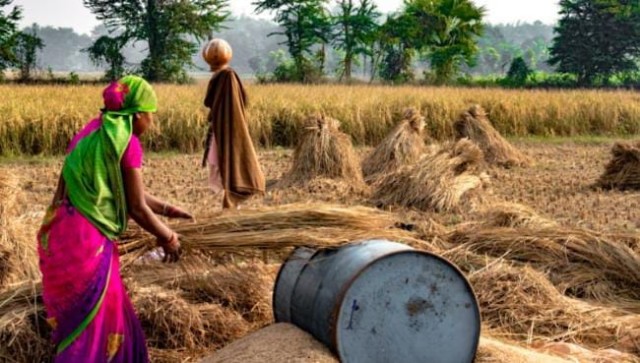When Gaiutra Bahadur came to India from the United States, the anxiety about women’s safety was at fever pitch. “Everyone freaked me out about Delhi,” recalls Bahadur. “They said Delhi is a particularly unsafe city for women. Don’t go out by yourself after 6 o’clock or after sunset.”
The advice was well-intentioned but ironic. When it comes to women going out by themselves, Bahadur comes from a family where the bar has been set quite high.
In 1903 Sujaria, her great-grandmother, a 27-year-old Brahmin woman boarded a ship from Calcutta bound for the sugar plantations of British Guiana. She was traveling alone. She was not headed to meet any family on the other end. And she was four months pregnant.
Bahadur never met her great-grandmother. All she had was the story her father told about his father being born on a ship. And her great-grandmother’s immigration pass which said how old she was and that she had a burn mark on her left leg and written above it in pencil the fact that she was pregnant.
But working backwards from that story, Bahadur uncovered an astonishing piece of history. “It started out as a story of identity but it didn’t take long for gender to become much more important,” says Bahadur. Her great-grandmother was not alone in making that journey. About a quarter of a million women did that as well – the first large scale migration of India women overseas. “About 75 percent of the women who migrated were traveling without a husband and that’s when I realised I had a book to write that wasn’t just about my great grandmother but about generations of women,” says Bahadur. That book is Coolie Woman – The Odyssey of Indenture.
The stereotypical image, positive or negative, of the migration story has usually been male – the Mexican man picking California strawberries, the Indian or Taiwanese engineer in Silicon Valley, the Bangladeshi immigrant coming across the border illegally who became a hot button issue in India’s recent election. Or it has been about family migration like the motel owners in a small town in the American South.
But women too are on the move around the world on their own. A 2007 World Bank report says women comprise almost half the world’s immigrants and that number is on the rise. “The share of women migrating for employment rather than family reasons has increased over time,” says Maurice Schiff, lead economist at the Development Research Group.
Women like Bahadur’s great-grandmother are the unacknowledged foremothers of that trend.
The reason why so many women went on their own from India to the sugar plantations of Guiana are complex. The plantations needed labour to replace the African slaves they had once used. So they turned to the colonies. There was a huge gender imbalance on the plantations and there was a great demand for coolie women. No ship could sail unless there were at least forty women for every 100 men among the coolies it carried. But the 1883 Indian Emigration Act would not allow married women to emigrate without the permission of their husbands. And as Bahadur notes the 1891 census of the United Provinces reported that 90 percent of girls between ten and fourteen were already married. That meant recruiters were on the lookout for all kinds of women who were alone – for example widows, pilgrims, sex workers, women cast out by their families because of some scandal.
“It was an unsettling question to ask myself was my great-grandmother possibly a sex worker,” muses Bahadur. But she says from the little that is known about her history and the fact that she was picked up in Ayodhya, she has her own hypothesis. “I think she was probably a widow who was on the Vaishnavite pilgrims circuit and she might have ended up in a relationship or being exploited by a temple priest. My father, for instance was told his father’s father was a gosain (sadhu).” Her research shows many women were picked up from Mainpuri most likely, she reasons “siphoned from the pilgrims on their way to Vrindaban in search of food, shelter and god.”
The exact truth will never be known. Bahadur found a village in Bihar that was possibly the one her great-grandmother came from. She even found a family that claimed her as their own. But these stories can never be watertight.
What is clear however is that even life as a coolie woman in a sugar plantation was a sort of liberation for many of these women. Or if not liberation, at least a new beginning. “There were so few of them they actually had a limited amount of leverage in choosing partners,” says Bahadur. Her great-grandmother got into a relationship with a man on the ship. Later she married a cow herder and set up a business selling milk, a business in which she was a partner. Some women married their white overseers who bought them out of indenture. Many shocked the missionaries trying to “civilize” them in Guiana. Bahadur quotes Sarah Morton hired to teach Indian girls to become proper wives asking a Brahmin widow if she had family in Guiana.
“No, Madame,” she replied. “Only myself and two children; when the last immigrant ship came I took a ‘papa’. I will keep him as long as he treats me well. If he does not treat me well, I shall send him off at once, that’s the right way, is it not?" Of course, calling the plantations of Guiana a haven for women’s liberation would be sugarcoating reality. Women were exploited as well, many murdered or disfigured with the same cutlass used to chop down the sugarcane.
The story of the indentured workers of the Indo-Caribbean is something that’s little discussed in India. In Kolkata, Bahadur found that few knew where the old British Guiana immigration headquarters in Garden Reach were. But she says Calcutta holds a huge place in the imagination of the Indo-Caribbean because that was their ancestral point of departure from India. In India most people don’t know anything about this history which “is unfortunate because this was the first significant movement of Indians abroad,” says Bahadur. “It was a third the size of the British slave trade – more than a million people.”
Some of the amnesia is because the “brain drain” of doctors and engineers has always been the migration story India wanted to highlight rather than the “coolie” migration. That holds true even today. The Indians building stadiums in the Middle East were not the ones feted in the first Pravasi Indian Divas-es organised with such fanfare by the government.
Indenture became a burning issue in British India. Gandhi demanded the viceroy abolish indenture. Sarojini Naidu talked about the “the misery and shame of our sisters in the colonies”. The missionary C F Andrews called indenture little more “than a legalised form of prostitution”. It was the first time women petitioned the viceroy about their rights. Bahadur writes India’s freedom fighters squared off against the British “in moral combat, over the bodies and honour of indentured women” and coolie contracts were cancelled in 1919. But when the indentured did come back, the returnees, especially women, were not welcomed back home after crossing the kala pani. Coolies deserted their wives from Guiana, often from a different caste because they had other wives in the home village. Many just camped out in the slums of Metiabruz in the docklands of Calcutta. When a ship with returnees docked in Calcutta, Nehru, with his hands already full with refugees from Pakistan, complained “Thetar log agaye (the stubborn people have come)”.
Bahadur however bears that stubbornness as a sort of badge of pride. She says that looking back what she sees is just “how brave and exceptional these women were in leaving by themselves”. That history deserves to be remembered, especially in these times when many try to turn the challenges faced by women in India as the story of some new 21st century clash between Bharat and India.


)




)
)
)
)
)
)
)
)